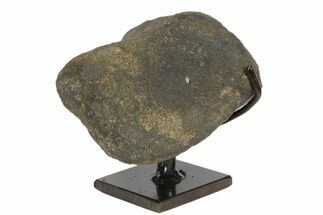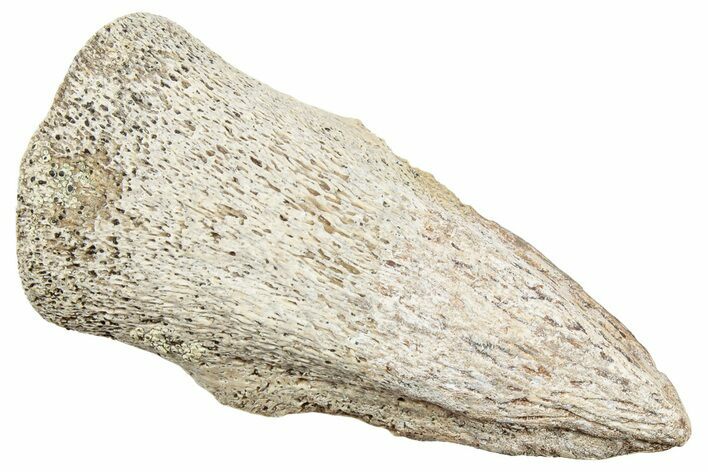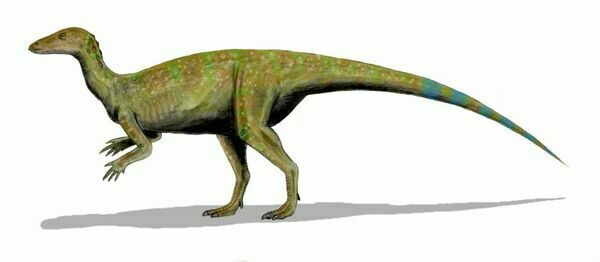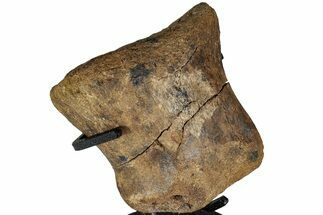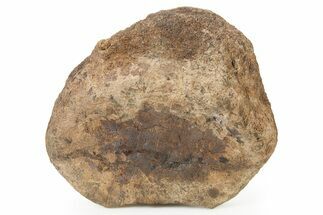This Specimen has been sold.
1.6" Dinosaur (Thescelosaurus) Toe Ungual (Claw) - Montana
This is a 1.6" long tow ungual (claw) of a dinosaur (Thescelosaurus), collected from the Late Cretaceous Hell Creek Formation in Fallon County, Montana. It's in good condition with no repair or restoration. The lateral ridges of claw have chipped-weathered away in spots.
Isolated bones from Thescelosaurus and Pachycephalosaurus can be difficult to distinguish between, however the flat plantar surface of the claw is characteristic of Thescelosaurus material.
Comes with a floating frame display case.
Isolated bones from Thescelosaurus and Pachycephalosaurus can be difficult to distinguish between, however the flat plantar surface of the claw is characteristic of Thescelosaurus material.
Thescelosaurus was a small ornithopod dinosaur that appeared at the very end of the Late Cretaceous period in North America. Many specimens' preservation and completeness indicate that Thescelosaurus may have preferred to live near streams.
This bipedal ornithopod is known from several partial skeletons and skulls, all of which indicate adult lengths between 2.5 and 4.0 meters (8.2 to 13.1 feet) on average. It had sturdy hind limbs, small wide hands, and a head with an elongated pointed snout. Their teeth and jaw morphologies suggest a primarily herbivorous diet.
This bipedal ornithopod is known from several partial skeletons and skulls, all of which indicate adult lengths between 2.5 and 4.0 meters (8.2 to 13.1 feet) on average. It had sturdy hind limbs, small wide hands, and a head with an elongated pointed snout. Their teeth and jaw morphologies suggest a primarily herbivorous diet.
Because of its age and sedimentary composition, the Hell Creek Formation has become one of the most paleontologically studied areas in the world. 158 genera of animals and 64 genera of plants are known from the formation and new discoveries are made frequently. In addition to Tyrannosaurs, Ceratopsids, and Hadrosaurs, the formation has yielded remains of amphibians, reptiles, lizards, snakes and turtles, fish and sharks, avian and non-avian dinosaurs, and mammals. The Hell Creek Formation gives the most complete understanding of the environment just before the Cretaceous-Paleogene extinction.
SPECIES
Thescelosaurus sp.
LOCATION
Fallon County, Montana
FORMATION
Hell Creek Formation
SIZE
1.6 x .7 x .45"
CATEGORY
SUB CATEGORY
ITEM
#245867
We guarantee the authenticity of all of our specimens.
 Reviews
Reviews

